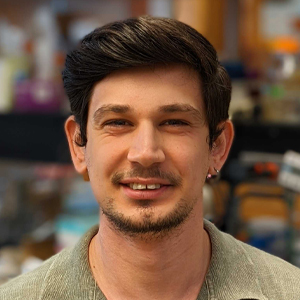The molecular biology behind exercise
Lifting and lowering weight — these two actions affect muscle structure differently. During a bicep curl, lifting a weight shortens the muscle and lowering lengthens it. We call these activities concentric and eccentric exercises, respectively. Studying these exercises is crucial in sports medicine because they affect strength, bulk and rehabilitation outcomes differently.
Understanding the biology behind muscle movement also helps to optimize exercise protocols, and a recent study by Jiawei Du and a team at the Beijing Sport University in China, published in the journal Molecular & Cellular Proteomics, seeks to do that.

“This study aimed to explore the molecular mechanisms underlying muscle adaptation to eccentric and concentric exercises by using advanced proteomic techniques,” Du said. “This aligns with our broader goal of optimizing training regimens for athletes and individuals undergoing rehabilitation.”
Cells must adapt to changing energy requirements and changing muscle shapes that result from exercise. This adaptation process requires some regulations at the genetic level. Thus, examining these changes helps us to understand what happens in the cells during exercise. With advances in next-generation sequencing technology and other proteomic techniques, researchers can analyze the global genome or proteome profiles and compare them before and after exercise.
In the MCP study, two groups of men did either concentric or eccentric resistance training for four weeks. Muscle biopsies taken before and after training were analyzed to identify and quantify proteins. The scientists investigated 3,172 proteins in total, and they found that expression changed in 122 proteins during eccentric exercise and in 101 proteins during concentric exercise.
“Use of comprehensive proteomic analysis has provided detailed insights into the molecular adaptations in muscle tissue during training,” Du said. “For instance, proteins related to oxidative phosphorylation were inhibited in eccentric but activated in concentric training, indicating different metabolic adaptations. This distinction provides new insights into how specific training types can be tailored for desired outcomes in muscle performance and recovery.”
Oxidative phosphorylation is a metabolic process that uses oxygen to generate high-energy molecules in the form of adenosine triphosphate, or ATP. Before this work, other scientists had reported that strength training increases oxidative phosphorylation in mitochondria, the organelles that power cells. However, no researchers had yet determined how specific types of training can change expression of proteins related to oxidative phosphorylation.
Twenty young men participated in this study. Considering physiological, especially hormonal differences between males and females, the findings could differ with women.
“For example,” Du said, “estrogen has a protective effect on muscle, potentially leading to less muscle fiber damage and different protein expression patterns in response to the same training protocols.”
The findings have broad implications for sports science, particularly in the design of training and rehabilitation programs. The group plans to extend exercise duration in future trials to observe long-term adaptations. Also, they think that observing a more diverse participant pool, including women, older adults and athletes from various sports, would help generalize the findings and further detail the molecular mechanisms across different populations.
Enjoy reading ASBMB Today?
Become a member to receive the print edition four times a year and the digital edition monthly.
Learn moreGet the latest from ASBMB Today
Enter your email address, and we’ll send you a weekly email with recent articles, interviews and more.
Latest in Science
Science highlights or most popular articles

Fueling healthier aging, connecting metabolism stress and time
Biochemist Melanie McReynolds investigates how metabolism and stress shape the aging process. Her research on NAD+, a molecule central to cellular energy, reveals how maintaining its balance could promote healthier, longer lives.

Mapping proteins, one side chain at a time
Roland Dunbrack Jr. will receive the ASBMB DeLano Award for Computational Biosciences at the ASBMB Annual Meeting, March 7–10, just outside of Washington, D.C.

Exploring the link between lipids and longevity
Meng Wang will present her work on metabolism and aging at the ASBMB Annual Meeting, March 7-10, just outside of Washington, D.C.

Defining a ‘crucial gatekeeper’ of lipid metabolism
George Carman receives the Herbert Tabor Research Award at the ASBMB Annual Meeting, March 7–10, just outside of Washington, D.C.

The science of staying strong
Muscles power every movement, but they also tell the story of aging itself. Scientists are uncovering how strength fades, why some species resist it and what lifestyle and molecular clues could help preserve muscle health for life.

Bacteriophage protein could make queso fresco safer
Researchers characterized the structure and function of PlyP100, a bacteriophage protein that shows promise as a food-safe antimicrobial for preventing Listeria monocytogenes growth in fresh cheeses.

